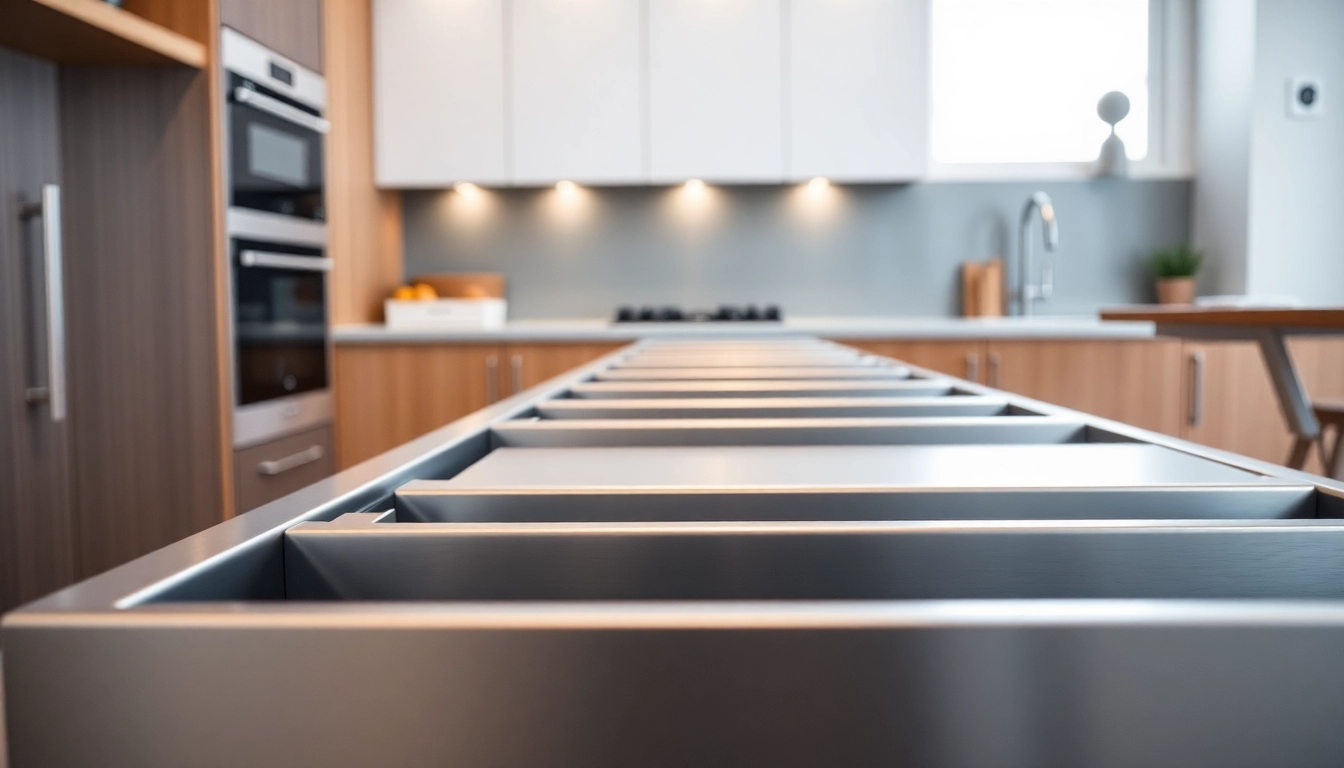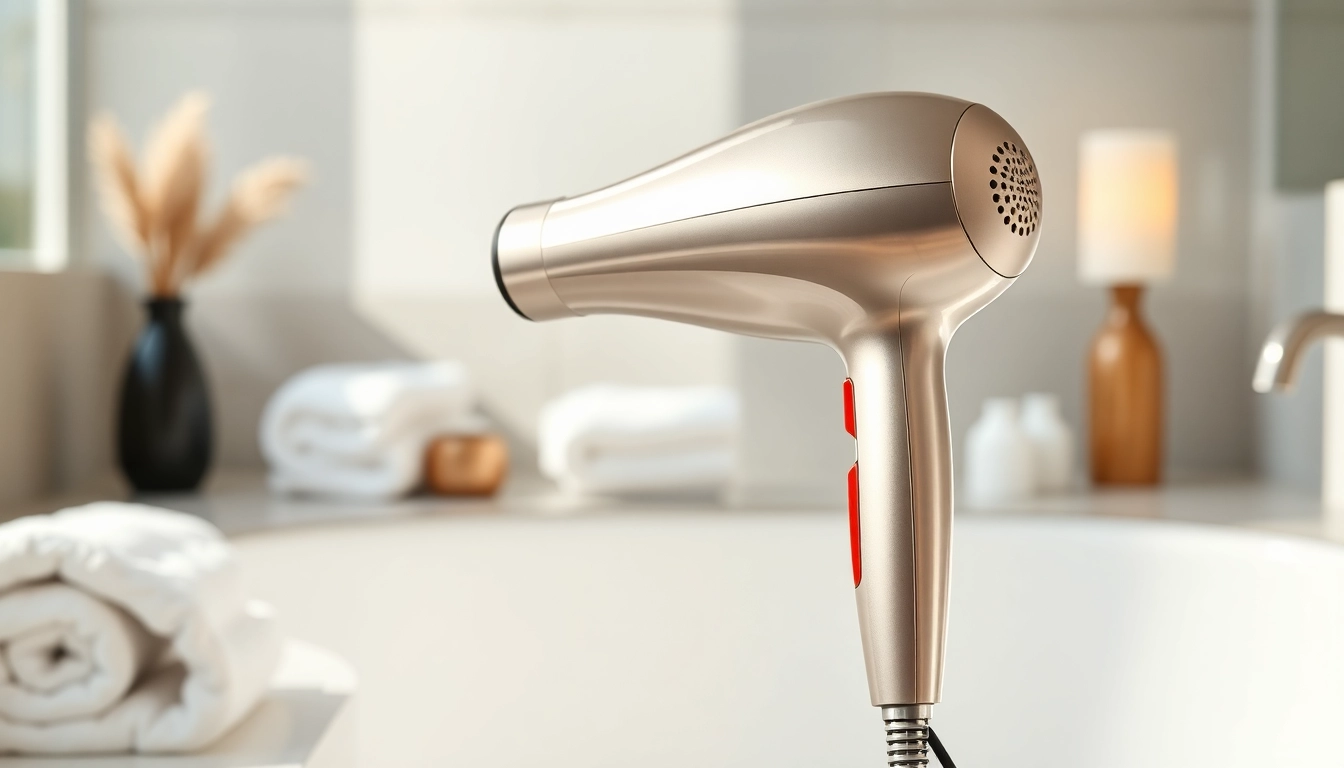Understanding Metal Drawer Systems
Metal drawer systems are an integral part of modern furniture and cabinetry, providing not just utility, but also enhancing the overall aesthetic appeal of a space. Their robust construction and advanced functionality make them suitable for a wide range of applications, from residential to commercial settings. By opting for a Metal Drawer System, users can experience a significant upgrade in the performance and style of their storage solutions.
What is a Metal Drawer System?
A metal drawer system is designed for cabinets, storage units, and furniture, characterized by its use of metal materials such as steel, aluminum, or zinc-coated steel. These systems integrate drawers equipped with high-quality slides, allowing for smooth operation and reliable functionality. Unlike traditional wooden drawers, metal systems offer higher load capacities and durability, making them ideal for both everyday use and heavy-duty applications.
Key Components of Metal Drawer Systems
The main components of a metal drawer system include:
- Drawer Box: Constructed from durable metal, the drawer box forms the core of the system, providing the necessary strength.
- Drawer Slides: These facilitate the opening and closing of the drawers. Options include ball-bearing and undermount slides, each providing unique benefits.
- Front Panel: The front panel can be customized to match the cabinetry or décor.
- Base and Back Panels: These panels add to the structural integrity and essential support of the drawer.
- Soft-Close Mechanism: This feature allows for gentle and noise-free closing, enhancing user experience.
Benefits of Using Metal Drawer Systems
Metal drawer systems come with various advantages that make them a preferred choice for many homeowners and businesses alike:
- Durability: Metal is inherently strong and resistant to warping, cracking, or splitting, which can occur in wood over time.
- Load Capacity: Metal drawers typically support heavier loads than their wooden counterparts, making them suitable for storage-intensive environments.
- Maintenance: They are easier to clean and maintain, as metal surfaces can simply be wiped down.
- Versatility: Available in various finishes and designs, metal drawers can complement any interior style.
- Enhanced Functionality: The smooth operational features, such as self-closing mechanisms, enhance user convenience significantly.
Choosing the Right Metal Drawer System
Choosing the right metal drawer system is a critical decision that can impact the efficiency of your space. It’s essential to consider several factors to ensure you make an informed choice.
Factors to Consider When Selecting Metal Drawer Systems
Here are key considerations for selecting a metal drawer system:
- Load Capacity: Assess the intended use of the drawers and determine how much weight they need to hold. Heavy-duty drawers are available for items like tools and equipment.
- Size and Dimensions: Measure the available space in your cabinets or furniture to ensure a precise fit, including height, width, and depth.
- Style: Choose a style that fits your overall design aesthetic, including finishes like powder-coated colors or brushed steel.
- Installation Type: Consider whether you prefer side-mounted, undermount, or other types of slide mechanisms, based on ease of access and installation requirements.
- Brand Reputation: Opt for reputable brands known for quality and reliability in the drawer hardware industry.
Popular Styles of Metal Drawer Systems
Metal drawer systems come in various styles, catering to different needs and preferences:
- Undermount Systems: These systems are installed beneath the drawer, providing a clean look without visible side slides.
- Side-Mounted Systems: Mounted on the sides, these systems are easier to install and offer a more standard drawer appearance.
- Soft-Close Drawers: Integrating a soft-close mechanism allows drawers to close gently and quietly.
- Heavy-Duty Systems: Designed for maximum strength, these drawers are suited for commercial and industrial applications.
Comparing Metal Drawer Systems to Other Drawer Types
When assessing metal drawer systems against traditional wooden or plastic drawer systems, several differences become apparent:
- Durability: Metal is more durable than wood or plastic, making it less prone to damage and wear.
- Weight Capacity: Metal drawers offer higher capacity potential, often required in workspaces.
- Cleanliness: Metal provides a non-porous surface, reducing the risk of stains, odors, and pests that more porous materials like wood may attract.
- Aesthetics: While metal could be seen as cold and industrial, modern designs incorporate stylish finishes that can enhance décor significantly.
Installation and Maintenance Tips
Proper installation and maintenance are essential for maximizing the longevity and performance of metal drawer systems.
Step-by-Step Installation Guide
Installing metal drawer systems can vary depending on the specific product but generally follows these steps:
- Prepare the Area: Clear the installation area and gather necessary tools, including a screwdriver, level, and brackets.
- Assemble the Drawer: If necessary, follow the manufacturer’s instructions to assemble the drawer components.
- Install Drawer Slides: Attach the slides to the designated positions on the side or bottom of the drawer box as per the chosen style.
- Fit the Drawer: Slide the drawer into the cabinet unit, ensuring it sits flush and functions smoothly.
- Test Functionality: Open and close the drawer several times to check the alignment and smoothness of operation. Adjust accordingly.
Maintenance Tips for Longevity of Metal Drawer Systems
To keep metal drawer systems in optimal condition, follow these simple maintenance tips:
- Regular Cleaning: Periodically wipe down metal surfaces with a soft cloth and mild cleaner to prevent corrosion.
- Lubrication: Occasionally apply lubricant to drawer slides and tracks to maintain smooth operation.
- Inspect for Damage: Check regularly for any signs of wear, loose screws, or other potential issues that could affect functionality.
Common Issues and Troubleshooting
In the event of operational issues with metal drawer systems, consider these common problems and their solutions:
- Drawer Sticking: Check the alignment of the slides and ensure they are level; readjust if necessary.
- Noise During Operation: Apply lubricant to the slides and inspect for any debris that may be obstructing movement.
- Weight Issues: Ensure the drawer is not overloaded beyond its capacity, and redistribute items if needed.
Applications of Metal Drawer Systems
Metal drawer systems cater to a broad spectrum of applications, making them versatile for different settings.
Home Uses for Metal Drawer Systems
In residential settings, metal drawer systems are commonly used in:
- Kitchens: For storing utensils, pots, pans, and food items.
- Bathrooms: To hold toiletries and cleaning supplies.
- Living Areas: For media storage, office supplies, or general organization.
Commercial Applications of Metal Drawer Systems
In commercial settings, these systems can be invaluable, especially in:
- Office Spaces: For file storage and desk organization.
- Retail Environments: For organizing merchandise and backroom inventory.
- Workshops: Heavy-duty metal drawers are ideal for tool storage and equipment management.
Custom Solutions with Metal Drawer Systems
Many manufacturers offer custom options to tailor metal drawer systems to specific needs, including:
- Size Adjustments: Custom dimensions are available for unique spaces.
- Finish Variations: Choose from various colors and coatings to fit your aesthetic.
- Special Features: Options like locking mechanisms, dividers, and advanced slide systems can be specified to enhance functionality.
Future Trends in Metal Drawer Systems
As technology and design evolve, so do metal drawer systems, with several upcoming trends emerging:
Innovations in Metal Drawer System Design
New designs focus on enhancing space efficiency, incorporating features like:
- Modular Systems: Allowing users to customize the layout and components of their drawer systems.
- Integrated Organizers: Built-in systems for sorting utensils or tools more efficiently.
- Smart Storage Solutions: Tech enhancements that offer inventory tracking or automated closing mechanisms.
Sustainability in Metal Drawer Systems Manufacturing
With increasing awareness of environmental impacts, many manufacturers are focusing on sustainable practices, such as:
- Recyclable Materials: Using metals that can be recycled or sustainably sourced.
- Low-Impact Manufacturing Processes: Minimizing energy consumption and waste during production.
Technology Integration in Modern Metal Drawer Systems
Integration of technology in metal drawer systems is becoming more prevalent, enabling:
- Smart Home Connectivity: Allowing drawers to connect with home automation systems for enhanced security and convenience.
- Advanced Tracking Systems: Providing users with data on storage use and efficiency for better space management.


